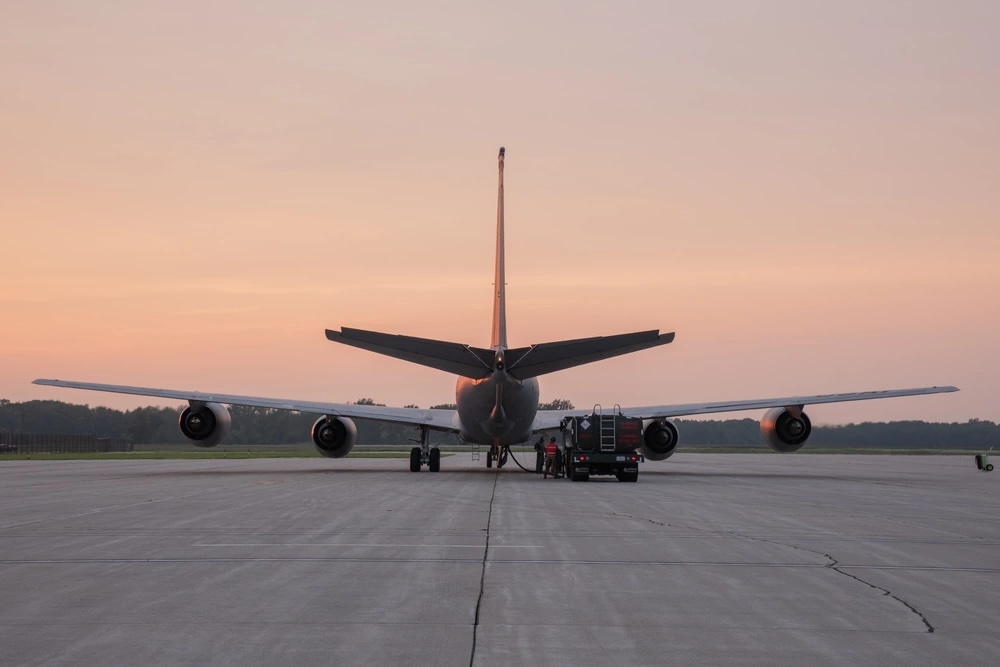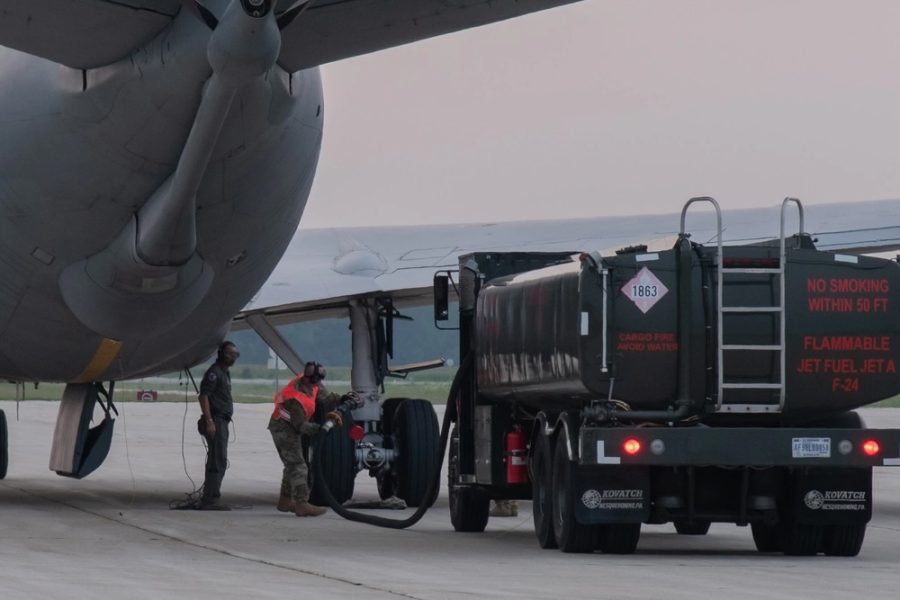The Michigan Air National Guard’s 127th Air Refueling Group recently put together what may be a first of its kind in the Air Force: a training program that teaches KC-135 tanker crews how to perform specialized fueling operations (SFO): ground-based procedures that could help gas up military aircraft in a conflict.
There are a few different kinds of SFO. One is hot refueling, where an aircrew lands, takes on gas from a fuel truck, and leaves the jet’s engines running so it can get back to the sky sooner. Hot refueling is helpful at small airfields that do not have permanent fuel storage.
Another form of SFO is wet wing defueling, where a jet lands, keeps the engines running, and offloads some of its fuel to a fuel truck so that the truck can gas other aircraft arriving in the future.
These techniques help with the Air Force’s concept of Agile Combat Employment (ACE), where Airmen and aircraft disperse and operate from small airfields in the hope that the movement will complicate an enemy’s targeting process.
But small facilities mean there are not as many ground crew Airmen to conduct SFO and not as much infrastructure to do it with. To prepare, Airmen across the service are learning skills outside their usual job specialty, and the new program in Michigan marks the latest example of aircrews joining in the challenge.

“The combat advantage of using aircrew to conduct SFO is in making austere, lesser-manned contingency locations more accessible to turning the aircraft,” Lt. Col. Michael Urban, an evaluator pilot with the 127th Air Refueling Group, told Air & Space Forces Magazine.
The challenge was that there did not appear to be a documented process for how KC-135 aircrews should conduct SFO under combat conditions. The Michigan team turned to Air Force Special Operations Command (AFSOC), which has a history of performing SFO in austere conditions, for help creating a concept of operations (CONOPS).
“We married-up the KC-135 draft CONOPS we have with [AFSOC’s] CONOPS and the outcome is very ‘aircrew-centric,'” Chief Master Sgt. Erik Wolford, senior enlisted leader of the 191st Maintenance Operations Flight, said in a recent press release. “We focused very heavily on having air crew perform the task in its entirety.”
Other aircraft in the service have SFO training programs, but this could be the first for Stratotanker aircrews.
“While we do not have perfect knowledge on what the rest of the force is accomplishing, we believe we are the first KC-135 unit to formally train this,” Urban said.
A KC-135 crew typically consists of a pilot, a copilot, and a boom operator who works the refueling boom on the jet’s belly. Urban explained that “the whole crew needs to work as a team to successfully accomplish SFO,” but the pilots’ primary duty station during the procedure is in the cockpit. The procedure also still requires some ground crew members to operate the fuel truck, for example.
SFO training for aircrew could take anywhere from two days to more than a month, depending on the procedure being taught, Urban added. This summer, the 127th ARG certified seven different aircrews from other Guard and Reserve units who came to Michigan for Exercise Northern Strike 23-2, a large-scale training exercise. The group hopes to have most of its aircrews certified in SFO, and Urban said there has been a considerable amount of interest from other units.
Offloading gas to the ground via air tanker is not a substitute for shipping bulk quantities of fuel via maritime tankers, of which experts say the U.S. needs more to sustain through a longer conflict. Still, delivering gas via jets could play an important role, especially in the early stages of a conflict. In the meantime, the training will likely continue to improve, Maj. Mark Hanna, of the 217th Air Component Operations Squadron, said in the release.
“The biggest challenge is that [SFO] is something we haven’t done before so it’s constantly evolving,” he said. “We tackle something that hasn’t really been done before and we hone it.”


